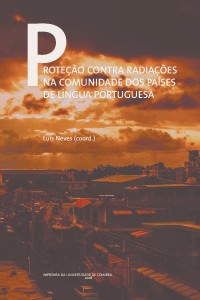Please use this identifier to cite or link to this item:
https://hdl.handle.net/10316.2/44454| Title: | Otimização da análise radiométrica de matrizes ambientais por espectrometria gama de alta resolução | Other Titles: | Optimization for the radiometric analysis of environmental matrices by high resolution gamma spectrometry | Authors: | Bastos, T. M. R. Paiva, J. D. S. Cantinha, R. S. França, E. J. De |
Keywords: | EGAR;Marinelli;MDA;radionuclides;environmental matrices;EGAR;Marinelli;MDA;radionuclídeos;matrizes ambientais | Issue Date: | 2018 | Publisher: | Imprensa da Universidade de Coimbra | Journal: | http://hdl.handle.net/10316.2/44443 | Abstract: | High Resolution Gamma-Ray Spectrometry (HRGS) has been widely used for identifying and quantifying radionuclides in various environmental matrices. However, the determination of these radionuclides activity at low activity concentrations is not always possible. This work proposed geometry of analysis that enables the optimization of the low activity radionuclide determination. For this, an internal vegetation standard provided by the National Intercomparison Program – PNI from the Institute of Radiation Protection and Dosimetry, Brazil, was analyzed by HRGS using a modified Marinelli beaker. The sample radioactivity, after the secular equilibrium, was measured by means of a HPGe detector from Canberra, model 3018, with a resolution of 1.9 keV in photopeak 1.33 MeV from 60Co. The obtained activity concentration results agreed quite well with the reference values for all radionuclides analized. The minimum detectable activity values for quantifying 40K, 60Co, 134Cs, 137Cs, 214Pb and 214Bi in this analytical condition were about 22 times lower than those obtained using the traditional geometry. A Espectrometria Gama de Alta Resolução (EGAR) é bastante utilizada na identificação e quantificação de radionuclídeos de diversas matrizes ambientais. No entanto, a determinação desses radionuclídeos em baixas concentrações de atividade nem sempre é possível. Este trabalho tem por objetivo propor uma geometria de análise que possibilite a otimização da determinação de radionuclídeos de baixa atividade. Para isso, foi analisado um padrão interno de vegetação do Programa Nacional de Intercomparação - PNI, organizado pelo Instituto de Radioproteção e Dosimetria, Brasil, por EGAR utilizando-se da geometria Marinelli modificada. A amostra, após o equilíbrio secular, foi analisada no espectrômetro gama da Canberra, modelo 3018, com resolução de 1.9 keV no fotopico de 1.33 MeV do 60Co. Os resultados de concentração de atividade obtidos concordaram grandemente com os valores de referência para todos os radionuclídeos analisados. Os valores das atividades mínimas detectáveis para a quantificação de 40K, 60Co, 134Cs, 137Cs, 214Pb e 214Bi nessa condição analítica foram cerca de 22 vezes inferiores aos obtidos utilizando-se da geometria tradicional. |
URI: | https://hdl.handle.net/10316.2/44454 | ISBN: | 978-989-26-1602-5 (PDF) 978-989-26-1601-8 |
DOI: | 10.14195/978-989-26-1602-5_11 | Rights: | open access |
| Appears in Collections: | Proteção contra radiações na comunidade dos países de língua portuguesa |
Files in This Item:
| File | Description | Size | Format | |
|---|---|---|---|---|
| otimizacao_da_analise_radiometrica.pdf | 368.92 kB | Adobe PDF |  |
Items in DSpace are protected by copyright, with all rights reserved, unless otherwise indicated.
